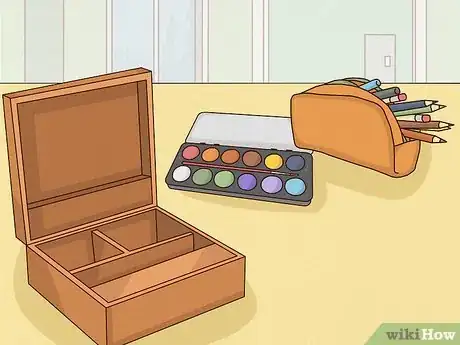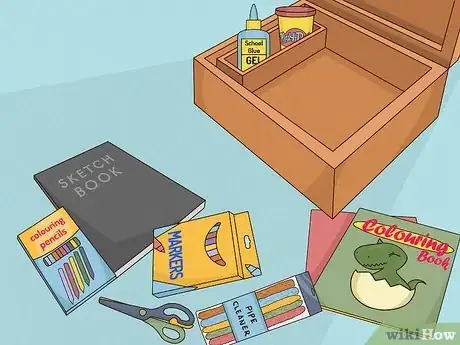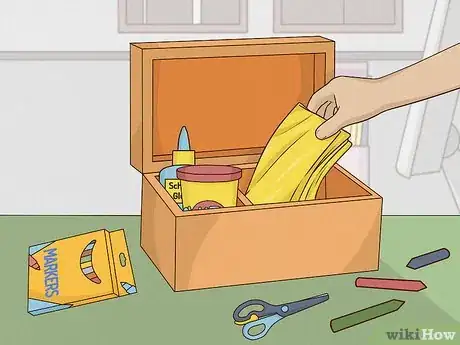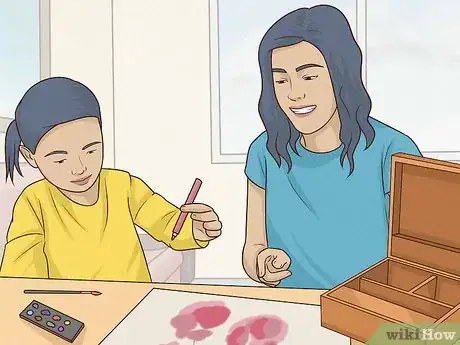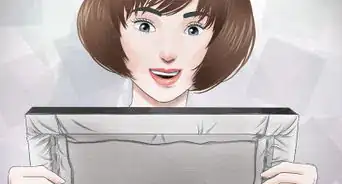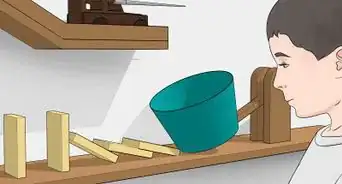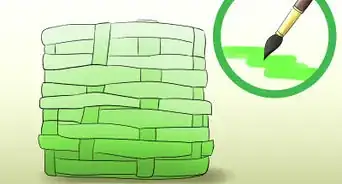X
wikiHow is a “wiki,” similar to Wikipedia, which means that many of our articles are co-written by multiple authors. To create this article, 31 people, some anonymous, worked to edit and improve it over time.
This article has been viewed 40,735 times.
Learn more...
As you begin studying art or creating art of your own, you may find it helpful to start with a selection of basic tools and equipment. Your art kit is your own, so take the ones described here as a guide to build upon or modify for your own style.
Steps
Method 1
Method 1 of 2:
Making an Adult Kit
-
1Decide what you will put everything in. Choose something easy to carry around with you, especially if you want to do art on location or you are taking classes. You could use anything from a shoe box to an old briefcase.
- Choose an ample container. You are likely to acquire more art supplies as you continue.
- Plan to protect the supplies that are sensitive. A hard sided pencil case or simply a tin or shoe box can keep pencils and other delicate items from breaking.
- Give some thought to how you will carry paints, brushes, and whatever you will use to clean them, especially if you're painting away from home.
-
2Find or buy some basic equipment. Here's a list of what you might need with a rough estimated price. You will not need all of these items; just select what you would like to use and then build up your kit as you go along. You can always add to it later.
- Pencil Set/£3-5
- Pens/£1
- Sketchbook/£3-4
- Oil Pastels/£2-4
- Dry Pastels/£2-4
- Acrylic paint set/£4-7
- Paint Brushes/£1
- Water Soluble Pencils/£3-4
- Colouring Pencils/£3-4
- Glue/£1-2
- Scalpel/£3-5
- Metal Ruler
- Pencil sharpener. A small, handheld one will travel well.
- Clay
Advertisement
Method 2
Method 2 of 2:
Making a Child's Kit
-
1A child's kit is extremely easy to make, since children are naturally creative and they will use just about anything. Here's a child's list to get started.
- Colouring Book/£1
- Safety Scissors/£1
- Colouring Pencils/£3
- Pipe cleaners and other items like that/£1
- Non-toxic glue
- Sketchbook/£1
- Play-doh
- Markers
-
2Include a cheap plastic tablecloth or oilcloth in a child's kit and explain to Mom and Dad that it's to go underneath anything messy: paint, clay, glue, etc. Plastic tablecloths easily cover the whole table and they come large enough for several friends or even the whole scout troop to gather around.
-
3With this child's kit it's really up to you. Use anything age-appropriate that they can't hurt themselves with.
Advertisement
Community Q&A
-
QuestionIf a child is a very good artist, should I get professional stuff, or basic?
 Community AnswerGet basic for grades K through 4, and professional for grades 5 through 12.
Community AnswerGet basic for grades K through 4, and professional for grades 5 through 12. -
QuestionCan I use a bag instead of a box?
 Community AnswerA box can be more easily organized and it will not take much time to search for something.
Community AnswerA box can be more easily organized and it will not take much time to search for something. -
QuestionWhich one is suitable for a 12-year-old, the adult or children one?
 Community AnswerIt would depend on the child's skills, but if capable, the child would probably prefer the adult one.
Community AnswerIt would depend on the child's skills, but if capable, the child would probably prefer the adult one.
Advertisement
Warnings
- Always supervise young children when they use anything like glue or scissors.⧼thumbs_response⧽
Advertisement
Things You'll Need
- Art supplies
- Box or bag
- Money
About This Article
Advertisement
